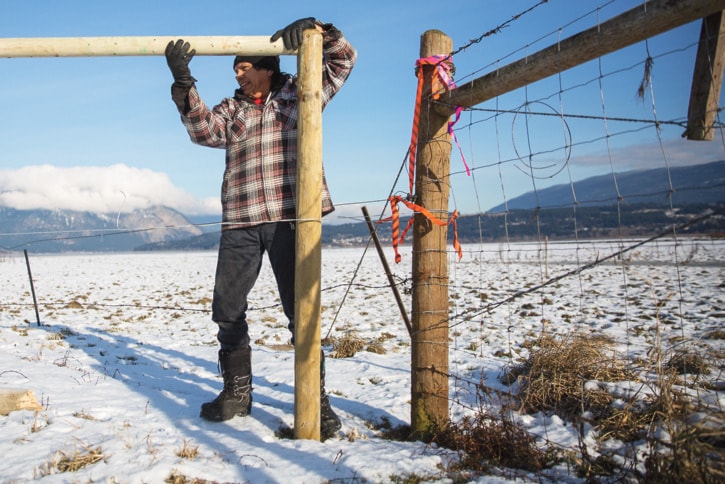A long-held dream for the Salmon River delta is becoming a reality.
The BC Conservation Foundation recently signed a contribution agreement with Fisheries and Oceans Canada (DFO) for $93,223 on behalf of the Switzmalph Cultural Society.
An additional $134,130 will be contributed to this project both in-kind and from other partners for a total project value of $227,353 over two years.
Neskonlith elder Mary Thomas died in 2007 but would be thrilled her hopes to restore the delta are becoming a reality.
The new project will build on previous restoration work completed by the society with funding from the Pacific Salmon Commission Southern Boundary and the British Columbia Environmental Farm Plan.
That project included building livestock exclusion fencing and planting of native species as well as installing a unique motion-driven, solar-powered watering source for the cattle.
More fencing is being installed with 20-foot posts that will be visible to boats during seasonal high water and 1,000 metres of high-tension fence wire that can be lowered during flooding to allow boat access and raised when the water recedes to exclude livestock.
“Because the water during freshet tops the fences, we need to put up warning buoys so it protects the fence and any boaters out there,” says Mary’s daughter Bonnie Thomas. “There’s a lot of work, a lot of money and a lot of support.”
Bonnie is grateful to project manager Barb Craven, who quickly put together a proposal to meet the funding deadline, and to the BC Conservation Foundation for stepping up as the required conservation organization on behalf of the Switz- malph Society.
She is especially thrilled the project will include restoring threatened native plants in the delta and removing invasive plant species.
“American sweetflag is already down there, but the way it thrives is by cultivation,” says Bonnie, explaining that almost every root replanted yields up to five more plants. “Traditionally, we planted more than we took and that’s how they thrived and carried on.”
Her mother earned many honours in her lifetime, including a National Aboriginal Achievement Award for Environment. She also received two honorary doctorate degrees, one from University of Victoria and another from the University of North Carolina at Charlotte.
“I think my mother would be ecstatic that the work down there is continuing, especially when it comes to the plants,” says Bonnie. “And it has an educational component. I think it’s totally in the context of everything she wanted to have happen.”
As well as destroying riparian vegetation, livestock break down low stream banks, frequently obstructing and/or delaying adult chinook, coho and sockeye salmon migration during late summer and fall low-flow conditions.
These delays in migration often lead to a significant increase in fish mortality from exhaustion, stranding and predation.
Restoration of the banks with vegetation will create a deeper, narrower channel for the returning fish.
Craven sees a lot of work in her future but is excited by the plans and by the level of support, both from DFO and a number of groups that have offered their volunteer services to accomplish the replanting.
“I think next year is going to be a stellar year for Mary’s initiative,” says Craven, who hopes to find more money to accomplish Switzmalph’s goals for the Salmon River delta. “We’ve got to get somebody else to partner with us; we don’t want this to die.”
